5- Prokaryotic sex and gene exchange
1/12
There's no tags or description
Looks like no tags are added yet.
Name | Mastery | Learn | Test | Matching | Spaced |
|---|
No study sessions yet.
13 Terms
what are the 3 main ways bacteria acquire dna?
transformation- a single strand of DNA is taken up after a donor cell lyses
transduction- a virus called a bacteriophage transfers DNA
conjugation- bacteria form a mating bridge to transfer plasmids (and sometimes chromosomes)
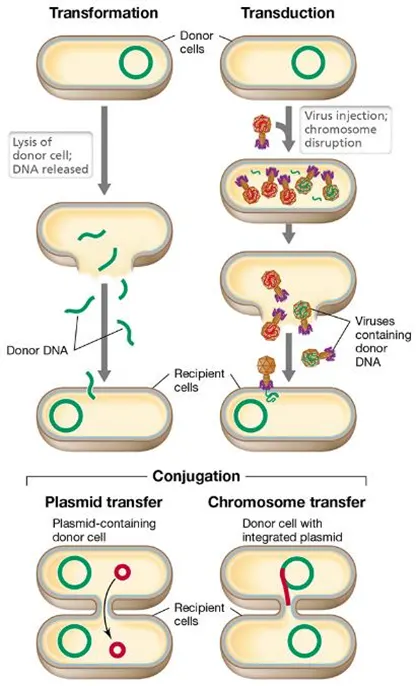
why does foreign DNA need to be recombined into the host DNA?
so that it isn’t recognised as foreign and broken down:
restriction enzymes in bacteria degrade specific restriction sequences in DNA
when these sequences occur in host DNA they get methylated by the bacteria so that they aren’t broken down
foreign DNA isn’t correctly methylated, so it has to be recombined to not get attacked
this is with the exception of if the DNA introduced is a self-replicating plasmid
how can foreign DNA be recombined?
DNA gets nicked at specific sites by endonucleases
the single stranded binding protein (SSB) binds to the start of the nicked sequence
recA, the main recombinating protein, triggers a cross-strand exchange
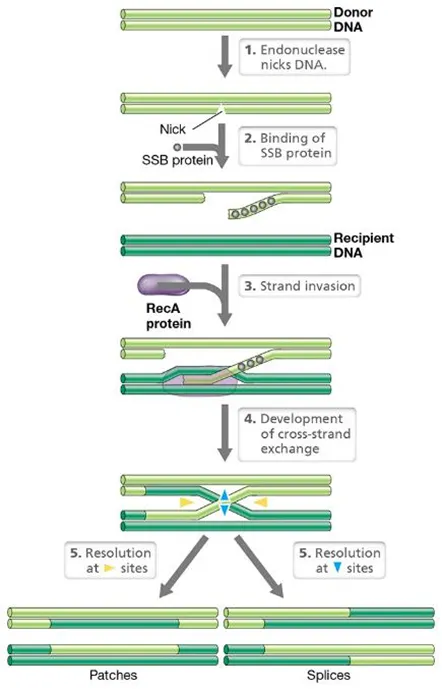
how can we measure DNA uptake after recombination?
we need a selective marker to see which recombinations were successful eg. antibiotic resistance or essential compounds like the amino acid tryptophan
auxotrophs are bacterial strains which cannot synthesise a particular compound
the wild type, which can produce the compound, is called a prototroph
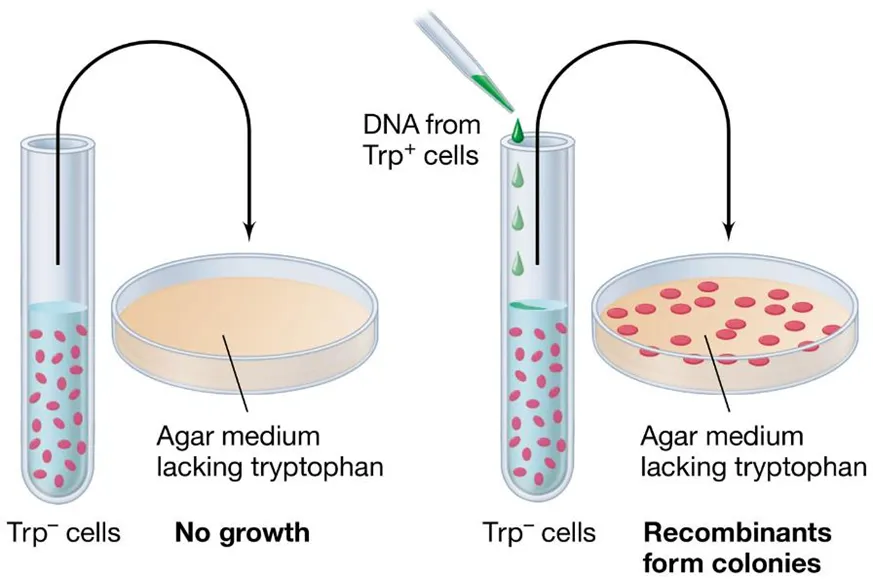
what is the process of natural transformation?
DNA from the donor cell is taken up as a single-stranded molecule (cut by single-stranded DNA binding proteins) and must be recombined by recA
this happens most in G+ve bacteria
G-ve bacteria can be artificially induced using calcium ion treatment (normally using self-replicating plasmids so they don’t have to be recombined, as this is an unnatural process)
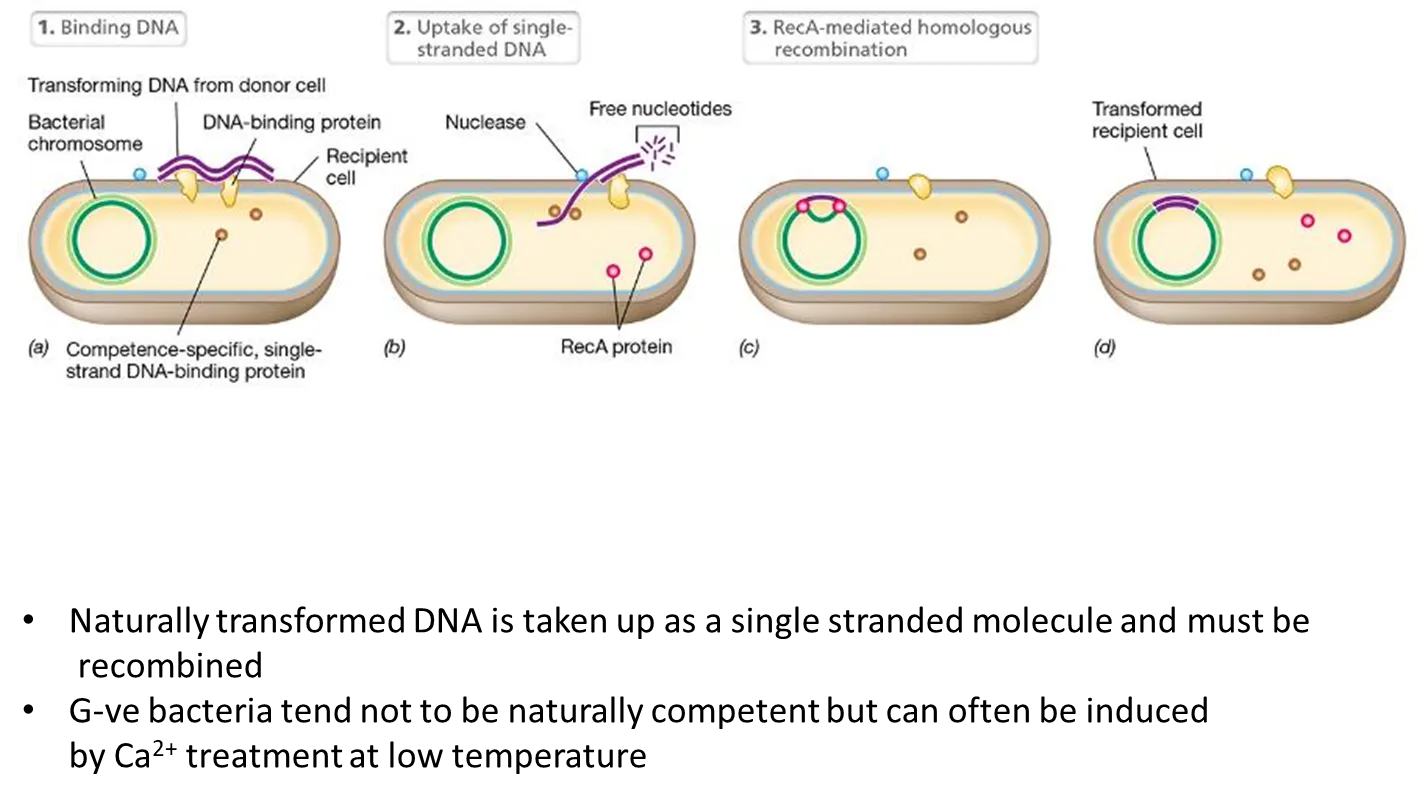
what is generalised transduction?
when a bacteriophage virus infects a cell, it injects its DNA into the cell, replicates its genome and goes into a lytic cycle
generalised transduction can sometimes occur when the nucleases injected also break up the bacterial DNA
this means that when the viruses are reassembled, some bacteriophages will include bits of bacterial DNA, and miss some of their normal DNA
this will make them defective- they can inject their DNA when infecting the host cell, but cannot cause it to lyse
this is a transducing particle, as it also injects the DNA from the original donor cell, which can be recombined
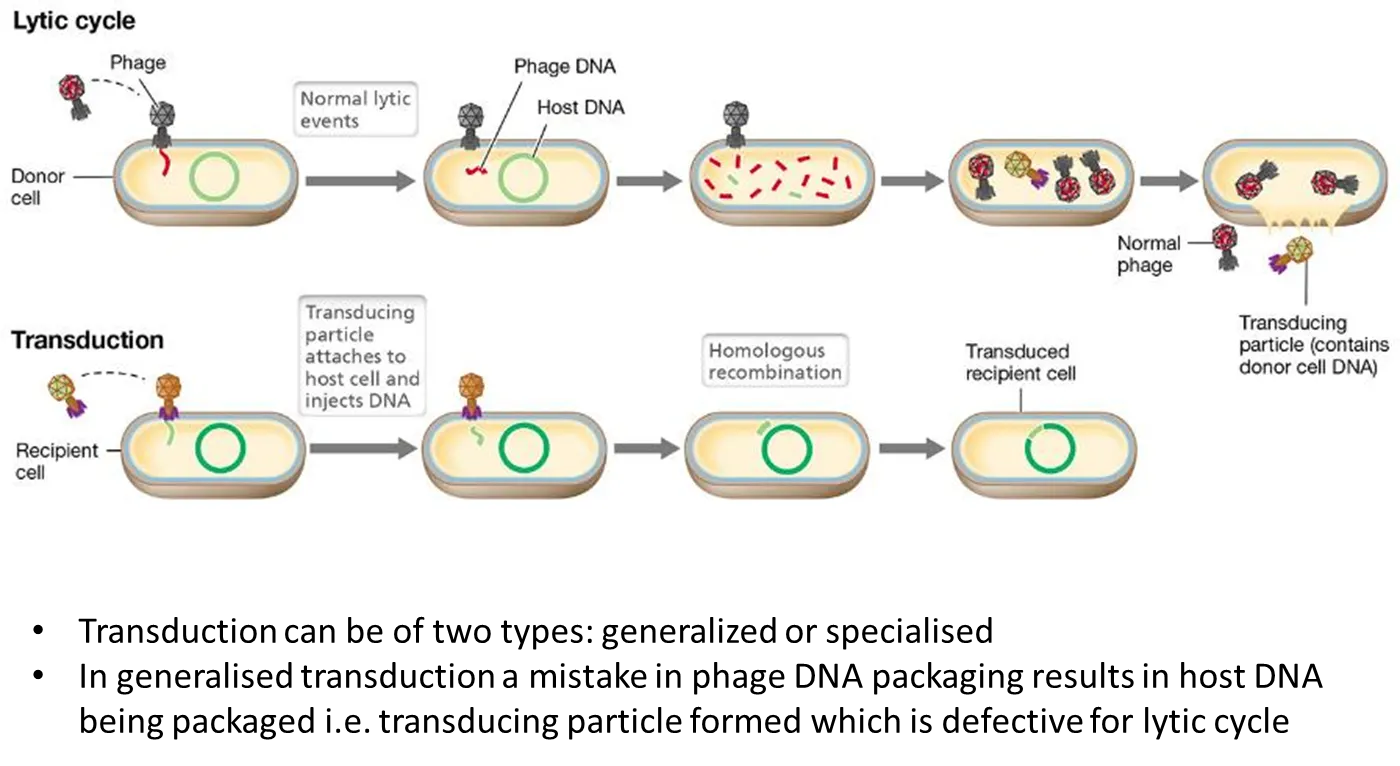
what is specialised transduction?
when some viruses inject their DNA into the host cell, it gets integrated into the host DNA as a prophage, using site-specific endonucleases
this can stay there, being normally transcribed by the bacteria, until some kind of stress, when it excises and replicates (by rolling-circle replication, which is very efficient) when the lytic cycle is induced
rarely, when the prophage enters the lytic cycle, it doesn’t excise correctly and takes some bacterial DNA with it, missing a bit of viral DNA, and so producing a defective phage that will transduce the donor DNA into a host cell

what is an example of specialised transduction?
the lambda genome has cos sites at either end that are complementary and can cause the lambda genome to become cyclical
this can then integrate itself into bacterial host DNA at a specific site, through the use of site-specific endonucleases
if the prophage then doesn’t excise correctly, it could take a section of the gene on either side in the host DNA eg. the galactose operon, which will be transduced to another bacterium
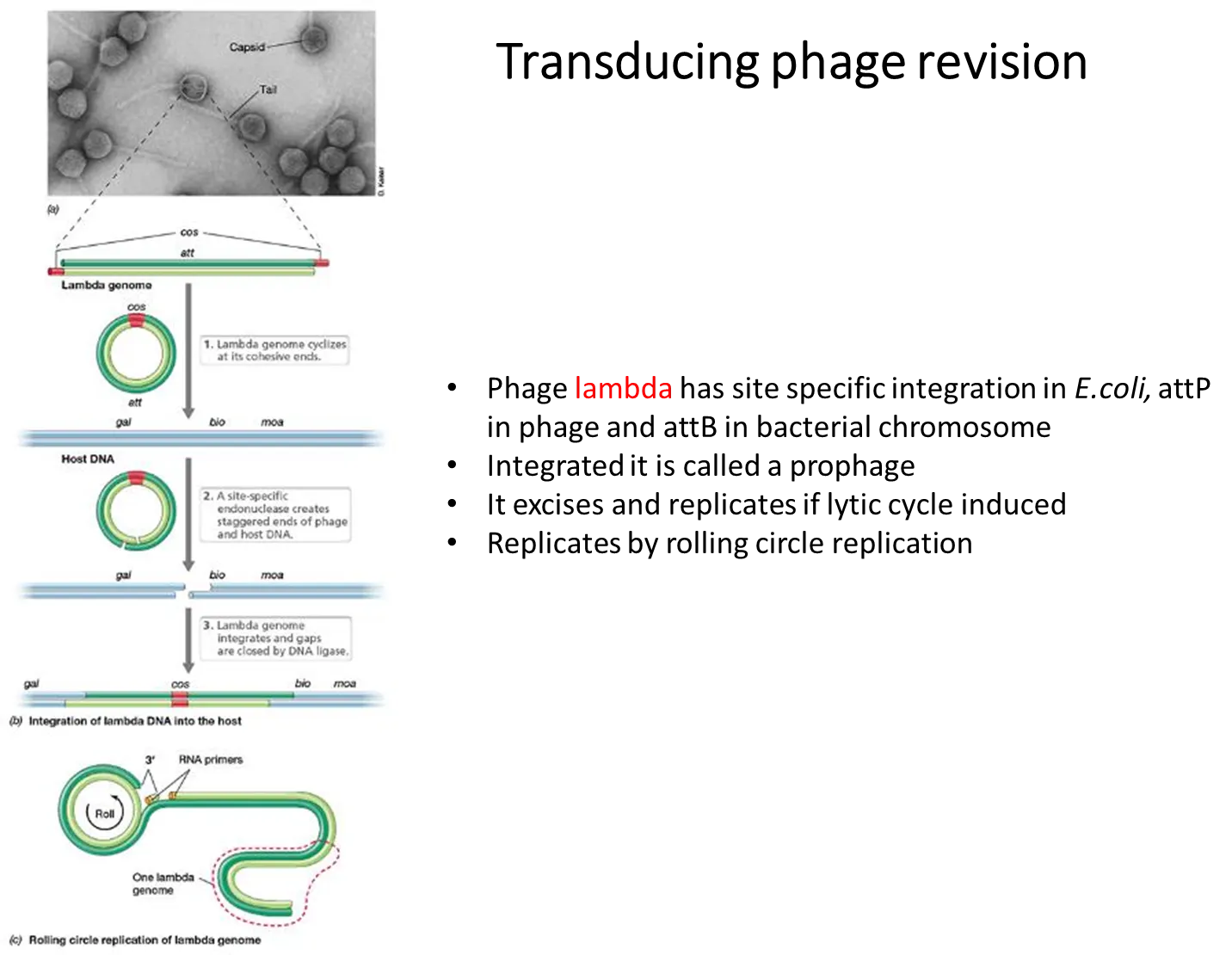
what are gene transfer agents?
defective phages that have been hijacked by bacteria to transfer its host DNA to other bacteria and not be lytic
what is the process of conjugation?
the fertility plasmid has all the genes needed to carry out conjugation, and can be transferred from a donor (F+) to a recipient that doesn’t have it (F-)
it has tra genes which allow it to form a sex pillus- a bridge that draws the two cells together to form a mating junction
the plasmid is nicked in one strand by the traI enzyme, and this strand moves into the F- cell, while both strands are simultaneously replicated, to form two double stranded plasmids, so that both cells are F+ (rolling circle replication)
the F plasmid is an episome (a plasmid that can recombinate and integrate into the chromosome), as both the plasmid and chromosome both have insertion sequences that match up
further conjugation will then transfer a bit of the host’s chromosome, which must recombine into the recipient’s chromosome as the whole F plasmid won’t be transferred, resulting in gene transfe
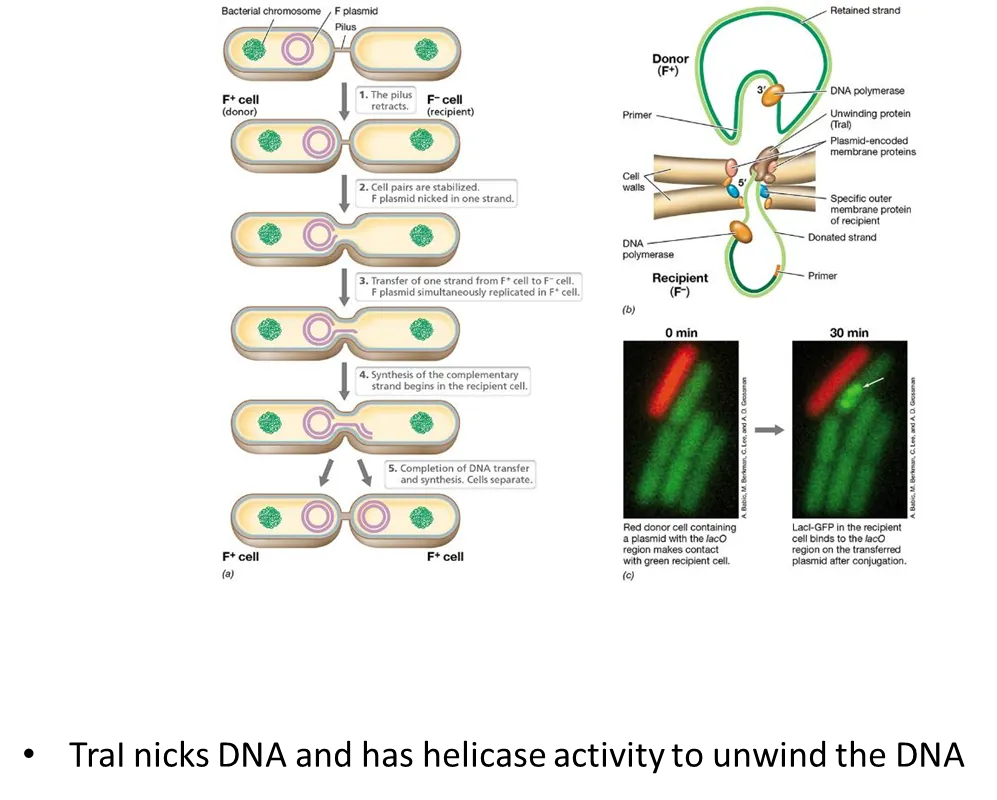
what are transposable elements and what are the two types found in bacteria?
transposable elements are stretches of DNA that can move from one site to another, and are found across all three domains
insertion sequences- short DNA segments that code for transposase, flanked by inverted repeats
transposons- longer DNA segments, essentially two insertion sequences with an extra gene (or multiple) inbetween, which also gets moved as part of the transposon
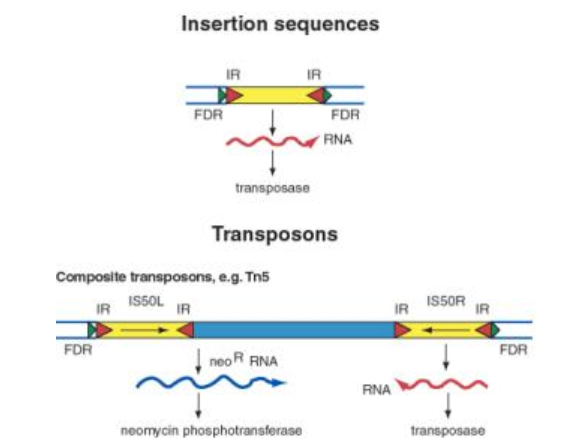
what are the two mechanisms of transposition?
in conservative transposition, the transposons just get moved to the target DNA
in replicative transposition, the transposons get copied into the target DNa, and the donor DNA is unchanged
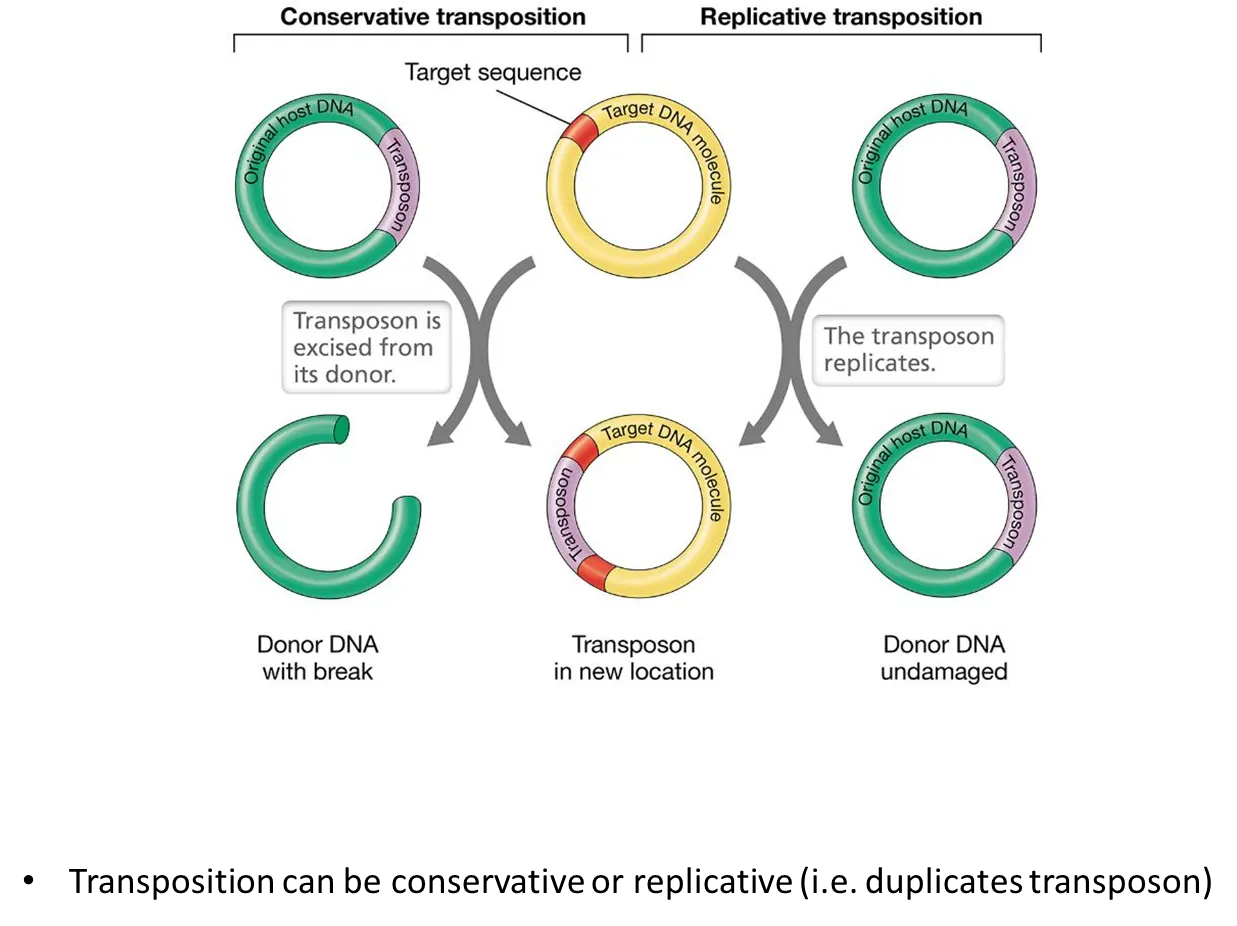
what is transposon mutagenesis?
when a transposon inserts itself into a gene, the gene is split into two parts and the sequence is altered- this essentially creates a mutation
this occurs naturally but can be used to create mutants in labs- transposons carrying antibiotic resistance genes are normally used so that cells that didn’t successfully recombine will be killed when cultured in antibiotics
